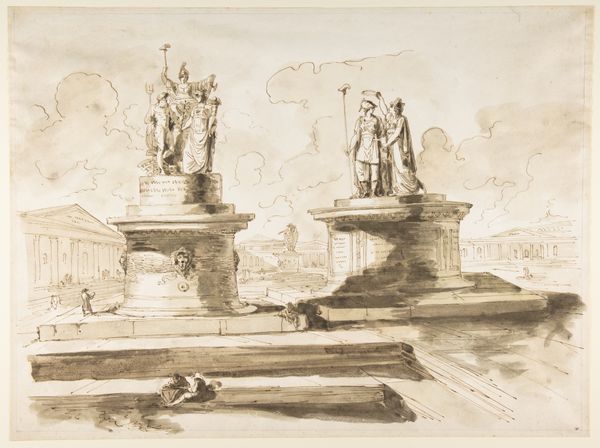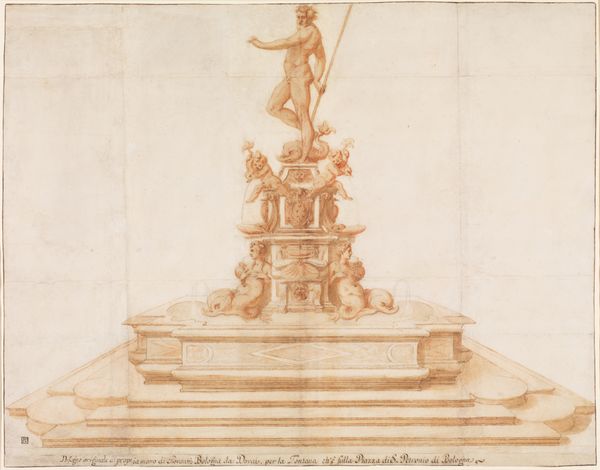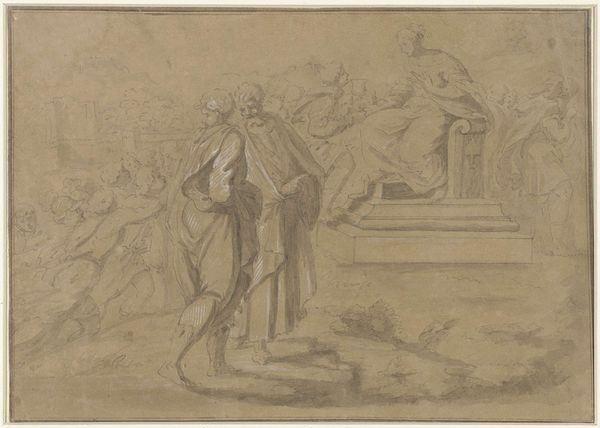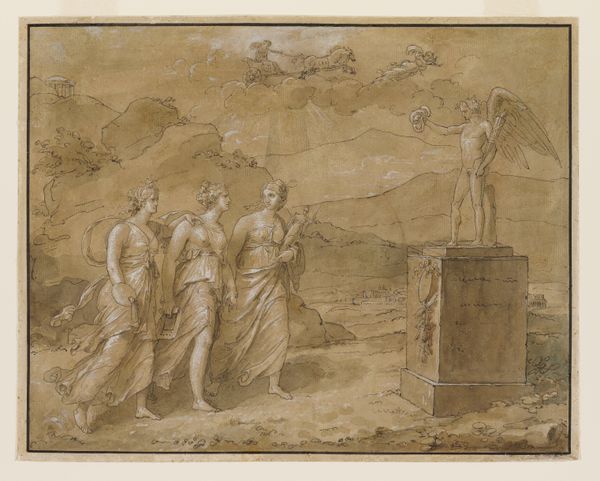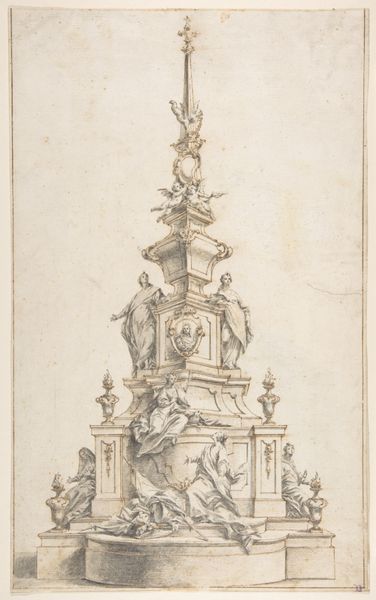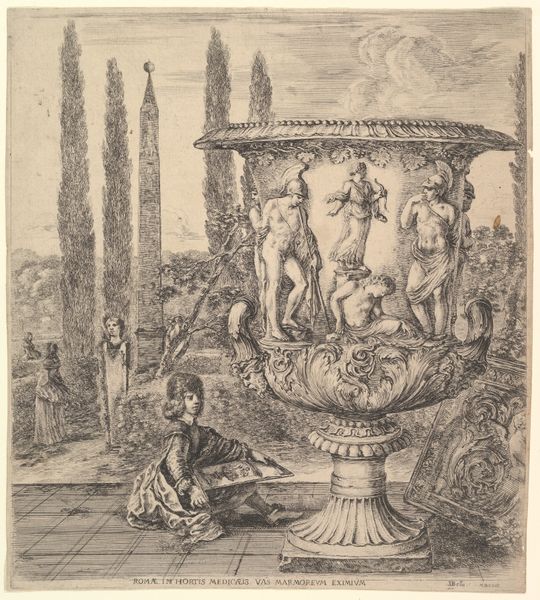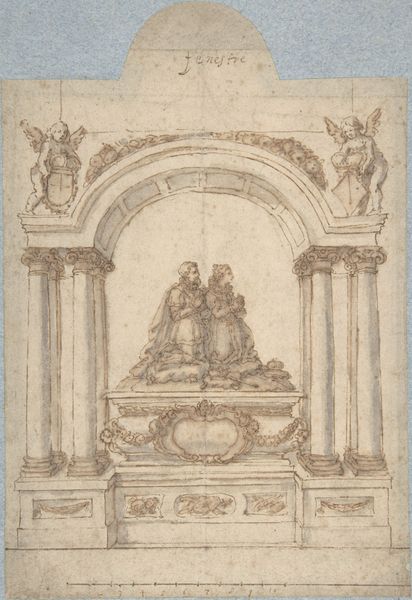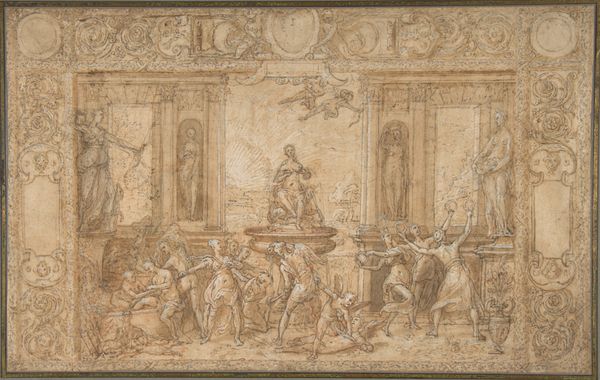
drawing, print, ink
#
drawing
#
baroque
# print
#
landscape
#
ink
#
classicism
#
cityscape
#
history-painting
Dimensions: sheet: 4 13/16 x 5 7/8 in. (12.2 x 14.9 cm)
Copyright: Public Domain
Editor: This drawing, “Piazza del Quirinale, Rome,” comes to us from the 1700s and the Metropolitan Museum of Art, rendered in ink. What strikes me most is its precise detail in capturing a bustling city square. What catches your eye about it? Curator: Immediately, I’m drawn to the material implications embedded within this seemingly straightforward cityscape. Look closely at the figures. Who would have been able to commission these city views at this scale, and how would the labour have been distributed in producing it? This would impact everything. Editor: That's fascinating. The process of creation itself informs the meaning? Curator: Absolutely! The artist’s choice of ink, the precision of line work – all these speak to a certain patronage, a demand for a specific type of urban representation that upholds particular socio-political values. The raw materials have origins, of course, too – where do these inks come from and how are they valued socially? What economic implications exist that support their existence? Editor: So, understanding the materials and labor helps us decode the drawing's message? Curator: Precisely. It's not just about what's depicted – the piazza, the figures – but about how that depiction came to be, and who benefitted from its production and circulation. Think about the distribution methods too – was this print a luxury item, a mass-produced commodity, or something in between? Editor: That's given me a totally different perspective. I was focused on the visual elements but I see now the materiality opens another avenue. Curator: Exactly, examining the materiality pulls at the very foundation it sits on.
Comments
No comments
Be the first to comment and join the conversation on the ultimate creative platform.
